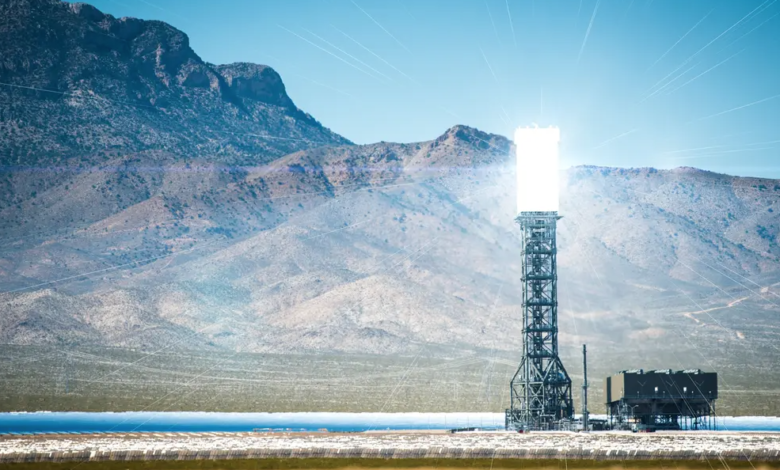Solar thermodynamic concentration, the “ceramic rain” increases the yield
New heat transfer materials for CSP solar systems
New technological advances for solar thermodynamic concentration, also known by the English acronym CSP. A group of engineers from CSIRO, Australia, has studied the use of “falling” ceramic particles to improve the capture and storage of heat in this type of plant. An innovation that could not only allow to raise the working temperature but also the duration of the thermal accumulation.
“More than eight years of development and thousands of hours have been invested to achieve this,” said Dr Jin-Soo Kim, head of CSIRO’s solar technology team. “This technology is critical to providing low-cost, large-scale renewable energy for the decarbonisation of Australia’s heavy industry”. “The challenge is not so much collecting energy from the sun; it’s how to safely and efficiently convert that energy into heat and store it for later use,” added fellow Wes Stein.
What is solar thermodynamics concentration?
Solar thermodynamics concentration is one of the most “ancient” technologies created to exploit renewable sources. But at the same time, it thrives on innovation and research. The label contains different types of systems: central tower, linear parabolic collectors, and linear collectors by Fresnel. Apart from the small differences, all these thermodynamic technologies exploit lenses and mirrors to concentrate the sun’s rays on a receiver and heat a heat transfer fluid at high temperatures. This fluid, whether it is molten salts, water, diathermic oils, or supercritical CO2, is directed towards a steam generator to which the heat is transferred. The latter operates a turboalternator to produce electricity. But when energy demand is nil, the fluid is stored to conserve thermal energy until the time of need.
From the first thermodynamic plants ever built (70s) to today, projects, studies and inventions have multiplied exponentially to improve efficiency and diffusion. However, market growth is still slow. According to the latest report of REN 21, the global installed concentrated solar capacity increased by 200 MW in 2022 to a total of 6,3 GW. The positive result compared to the almost zero performance of 2021 shows a strong slowdown in the world compared to the beginning of the last decade. In the early ‘10s the enthusiasm of Spain and the United States had made the solar thermodynamic coma ever in history. Today, none of these historically leading markets has increased capacity in recent years. The new projects are all linked to emerging markets, including Chile, China, Israel, Morocco, South Africa and the United Arab Emirates.
The ceramic sand rain of the CSIRO
Part of the difficulties related to the diffusion of concentrated thermodynamic solar is found in the high plant cost. That’s why it is essential for the industry to increase efficiency and yield again. Help comes from the CSIRO study. Jin-Soo, Stein and colleagues made ceramic particles the size of grains of sand and able to withstand incredibly high temperatures. They can be heated up to 800 ºC (and in the future more than 1000 ºC) and retain heat for 15 hours. By comparison, molten salts and diathermic oils can only withstand temperatures up to 600°C and 400°C, respectively.
However, the heat transfer material used is not the only innovation of the CSIRO project. Scientists have designed an ad hoc system for heat transfer: particles are dropped from a cone on top of the solar tower through the absorber, in order to receive directly concentrated solar energy. Once heated, they are stored in a silo to be used when needed.
The CSIRO Newcastle thermodynamic solar power plant has 400 mirrors. But scientists explain that a full-scale system could use over 10,000 mirrors and larger dimensions for a total power of 100 MW.






